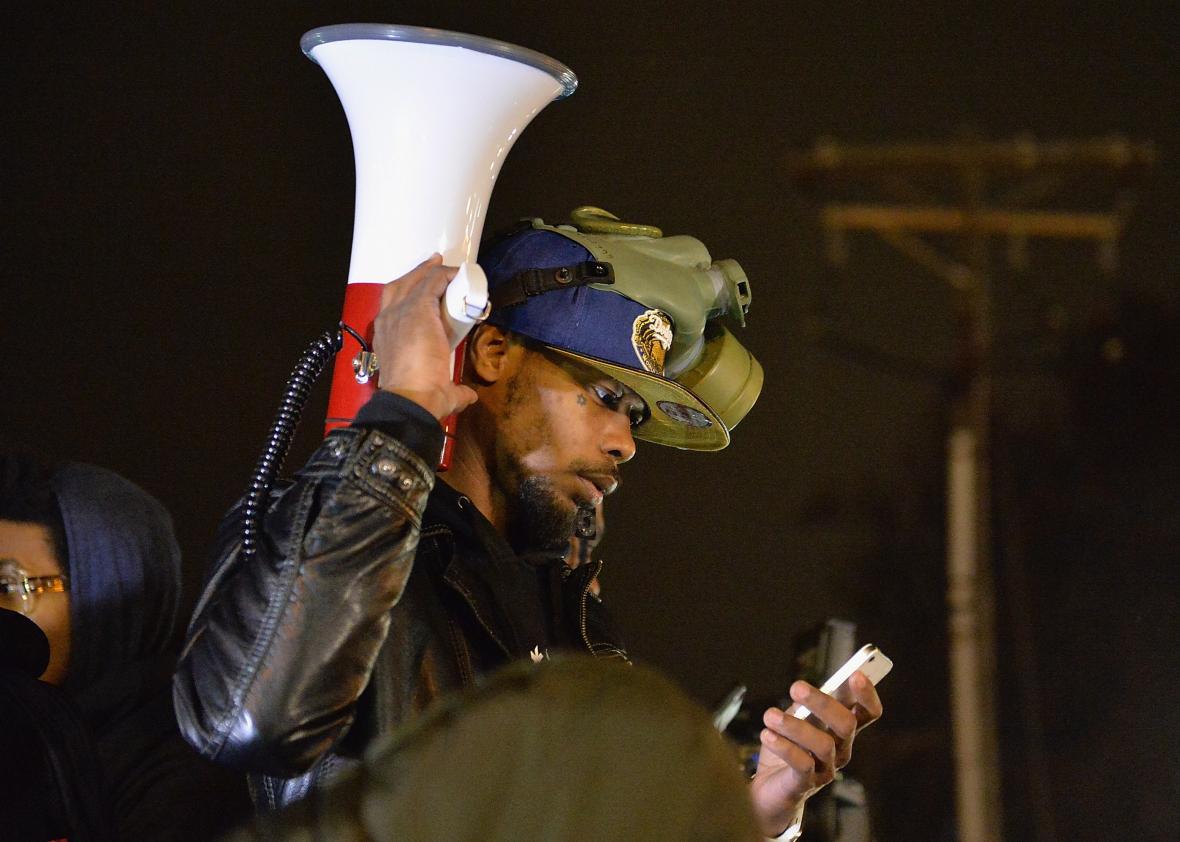If you’re participating in any protests this inauguration weekend, you’ll likely have your cellphone on hand. And if you do, then you need to be aware of your rights when it comes to your phone. In 2014, Lily Hay Newman wrote a comprehensive cellphone rights guide for Ferguson protesters. Below are some tips—mostly the same, some updated because of changing legal and technical environments—that will help you keep your information safe.
Police can seize your phone if you’re arrested, if they search your vehicle, or if they believe it has evidence of a crime, such as photos of the protest, according to the Electronic Frontier Foundation. But, as Newman noted in 2014, the Supreme Court has ruled that police need a warrant to search a cellphone even if they have already seized it. This means you’ll probably be able to keep your photos, videos and messages to yourself, though it’s worth remembering that “in a heated moment law enforcement could still bend these rules,” Newman wrote.
EFF recommends, if possible, that you bring temporary devices to protests in place of your regular phone. That way, you won’t expose your sensitive data, which can provide a digital breadcrumb trail back to your social media and other communications data. But if you can’t afford a burner, there are a few things you can do:
First, make sure it’s encrypted. Most iPhones are encrypted by default, but many of the Android devices are not. Usually, if your smartphones isn’t encrypted automatically, there is an option to turn that on, and you can look up where to find that on your phone.
Second, you should add a keycode or password to your phone and set your phone to lock quickly when not being used. As our previous guide notes, a fingerprint lock may not be enough to secure your phone: In 2016, a California judge issued a warrant to force a woman to unlock a fingerprint-protected device.
Third, you might want to back up your data beforehand in case your phone is seized and the police intentionally or accidentally tamper with it. “While we believe it would be improper for the police to delete your information, there’s a chance it could happen,” the EFF website notes. While at the protest, you can upload photos and videos to cloud services or social networks to preserve them.
Finally, you should use encrypted messaging apps to keep your texts safe. WhatsApp is a commonly used encrypted messaging app, but one of the most recommended apps is Signal, which also works for voice calls. It would also be smart to turn off text notifications on your lock screen.
Encryption and the legal protections keep the content on your phone safe—but they don’t necessarily apply to the records of your activity or your location. According to Jay Stanley, a senior policy analyst at the American Civil Liberties Union, police don’t necessarily need a warrant to get to your metadata—which might include information about who you were texting while you were at the protest, for example—or possibly even your location data, which could also give police a more precise idea of where you were during the protest or even who you were with.
Even though the ACLU and EFF recommend precautions, they note that you should be perfectly within your rights to take photos or videos in a public space. Law enforcement officers would need your permission to view anything on your smartphone, and you can decline and refuse to provide your passcode if asked.
The ACLU also notes that the Supreme Court case that prevents warrant-less searches of cell phones doesn’t explicitly apply to other devices, such as digital cameras. “It seems pretty obvious to us that the logic should apply to any digital device,” Stanley says.
After the protest, you have one last decision to make regarding privacy: whether you want to scrub the metadata attached to the media you captured during the event. Location metadata can help authenticate your media, but it will also indicate your location at the time you shot the photo or video.
It’s not likely that anything bad will happen at the Women’s March this weekend. But it looks like the Trump era will be one filled with protests—and it’s best to start these good cellphone security practices now. We have (at least) four years to go.
